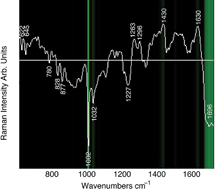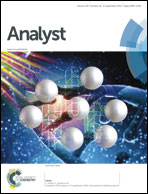Model based variable selection as a tool to highlight biological differences in Raman spectra of cells†
Abstract
In vitro Raman spectroscopy used for non-invasive, non-destructive characterization of single cells and tissues has proven to be a powerful tool for understanding the complex biochemical processes within these biological systems. Additionally it enables the comparison of a wide range of in vitro model systems by discriminating them based on their biomolecular differences. However, one persistent challenge in Raman spectroscopy has been the highly complex structure of cell and tissue spectra, which comprise signals from lipids, proteins, carbohydrates and nucleic acids, which may overlap significantly. This leads to difficulty in discerning which molecular components are responsible for the changes seen between experimental groups. To address this problem, we introduce a technique to highlight the significant biochemical changes between sample groups by applying a novel approach using Partial Least Squares – Discriminant Analysis (PLS-DA) Variable Importance Projection (VIP) scores normally used for variable selection as heat maps combined with group difference spectra to highlight significant differences in Raman band shapes and position. To illustrate this method we analyzed single HeLa cells in their live, fixed, fixed and ethanol dehydrated, to the fixed, dehydrated and then rehydrated states respectively. Fixation, ethanol dehydration and rehydration are known to induce molecular changes in the lipids and proteins within each cell.


 Please wait while we load your content...
Please wait while we load your content...